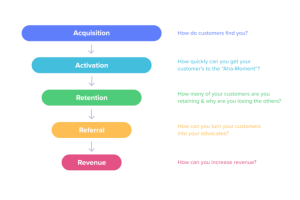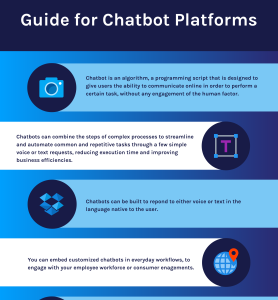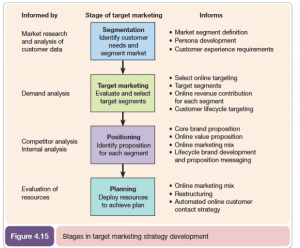Adjustments And Adjustments. Talent Conservation Strategy In The Age Of Great Retirement
In the past few months, the phenomenon of job hopping or job hopping has been called “ambassadorial posts”. Infectious diseases are considered to be a great accelerator of what will happen in the future. Employees who question their behavior will now accept this more seriously and submit their resignation letters in their resignation letters.
This trend is a major turning point in the employment market. Employees have such strong power in the employment market and create higher replacement rate demand. Employees are taking more control of their own lives and looking for new roles. They believe that these roles are people-oriented and consider their own interests.
Several studies show that people at work are considering changing jobs. A Microsoft survey shows that 41% of employees consider resigning(AON, 2021). The new Gallup study shows that 48% of the working population in the United States are actively seeking jobs or new opportunities(Gandhi, 2021).
Epidemics suppress demand.
Several factors can be attributed to the resignation.
The Pan American era forced many employees to reassess their goals and decide what they wanted. Employees have the opportunity to reassess what is important to them. Knowing what they want and how to do it is a great starting point for a great resignation. They are still concerned about their career development when planning the risk of moving from one company to another.
People are looking for new opportunities that are more flexible than their current jobs. Infectious diseases have also accelerated the demand for new areas of concern and technological development.
The prospect of teleworking may alienate some people who rely on constant communication with colleagues. Some people may want to check their ideas with their agents and talk to them face to face. On the other hand, some employees accept remote work and continue to remain flexible so as to deal with other problems in life. Some people may have found an opportunity to move to low-cost areas.
Employees who want to resign are also troubled by some factors, such as burnout, financial worries, mental health and safety problems, desire for more stability or need more work and life balance.
Reversal cycle
Obviously, employees gained confidence and assessed the risks. They are looking for more control over their lives and a balance between life and work. Infectious disease is a turning point, a consideration for the future, and a reset button for many employees.
As mentioned earlier, employees’ expectations are changing. Money is no longer the only motivation to retain talents. Higher rewards will not automatically translate into the highest talent. Therefore, employers should develop ways to rethink and redefine to retain talents.
According to Gandhi(2021), from customer oriented service roles to highly professional positions, workers in all business types actively or passively seek jobs at roughly the same speed.
Unfortunately, most of the employees did not work or left actively, resulting in a decline in the company’s productivity. Management must collaborate more to define productivity more broadly and improve employee satisfaction. When redefining the learning and happiness curve of employees, some strategies that can be implemented should be considered to encourage and maintain employees.
Participation and retention policies
The following is a strategy to retain employees, which can solve the problem of employee turnover.
-
Verify what drives and maintains efficient data usage. Dedicated staff, struggling staff, training and maintenance costs.
-
Identify opportunities for the company to encourage the team. Some top talents may need to remind the company that they are catering to their needs in terms of money or other aspects, so that they have a sense of purpose and security in their career.
-
Understand employees’ frank views on the company. You can provide them with wages that meet the industry standards, but their views may be different. The recognition of employees will make them feel that they are part of the organization. Confirm their ideas and clearly communicate with the team(Lawton, 2020).
-
Define your culture. Are employees looking at the transparency of the company? How to communicate? Do employees think they are taken care of? What is the relationship between management and employees? All these factors emphasize how to attract and retain organizational culture and talents.
-
Effective communication. Communication barriers can lead to employee depression. It is important to listen, share and provide feedback to listen to and share the views of misunderstood employees. When employees realize that communication channels are open, they can improve their trust.
-
Organizational leadership should be committed to supporting workers. Are the company’s leadership and management worried about disconnection with employees? Do they offer options such as paid parental leave or other employee benefits?
-
Reconsider remote or mixed operations. As long as there is such a choice, many employees will welcome the opportunity to work at home.
-
Re evaluate the value provided by the company to employees.
-
Expand the scope of recruitment, including cross regional and multi background recruitment. In the whole organization, the expansion of technology use is the core driving force for the growth of other areas of the company.
-
Evaluate the learning opportunities available in the organization. Improve the possibility for employees to master new technology, improve technology and meet new challenges.
Future opportunities for the organization
The leaders and employees of the organization should take the opportunity of this ambassadorial position to formulate their working methods, workplaces and how to integrate their work into their lives.
Due to the competition to retain the best talents, the whole working environment will be transformed into a more inclusive and people-centered working world. Organizations leading change will leap in the future(KForce, 2021).
Tool file
Inside.(August 25, 2021). Great resignation? Retain talent in the world of leaving. Search on com:
Gandhi V(July 22, 2021). “Ambassadorial post” is actually “great dissatisfaction”. http://www.gallup.com Search in:
K calendar.(2021). Great opportunities. www.kforce. Search on com:
Lawton, G.(August 2, 2020). Strategies to improve employee loyalty and retention. searchhrsoftware.techtarget. Search on com:








